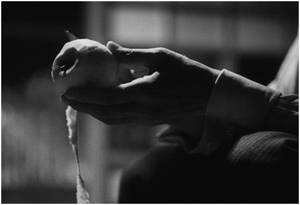July 20th Log
ACE IN THE HOLE
1951, Billy Wilder, United States
1st Viewing, DVD
“How'd you like to make a thousand dollars a day, Mr. Boot? I'm a thousand-dollar-a-day newspaperman. You can have me for nothing.” The critical and box office success of his masterpiece 1950 film Sunset Blvd. gave Billy Wilder the complete freedom for his next film, and the result is an even darker film that examines American culture in a way that no film ever had before. Even today, Ace in the Hole is cold, bitter, and cynical yet fascinating in it’s anticipation of American media frenzy. The film looks at influence, chaos, and harm caused by a media circus, as well as an American culture always looking for individual profits. After the film failed at the box office, producers changed the title to The Big Carnival, but the original title is more defining of the films bitter and cynical edge. Kirk Douglas gives one of his greatest performances in one of his most demanding roles, playing Chuck Tatum- a cynical newspaper man who is forced in a moral dilemma of a human life and a news story of a lifetime. Jan Sterling gives a brilliant performance as the victim’s greedy wife, who decides to go along with Tatum’s story. Ace in the Hole is a masterful study of American culture and media. Featuring Wilder’s trademark dialogue (including occasional moments of cynical humor), and of course a brilliant final shot. Ace in the Hole is a bold, scathing social scrutiny and one of the essential films of Hollywood cinema by one of Hollywood’s essential filmmakers.
DAYS OF YOUTH
1929, Yasujiro Ozu, Japan
Repeat Viewing, DVD
Days of Youth is the earliest surviving feature film from Ozu (he made seven prior films that have since been lost). It's a remarkable film to watch just to see how Ozu has grown as a filmmaker. His earliest work shares his love and influence of Hollywood comedies and perhaps few films express this more prominently then Days of Youth. Aside from the direct visual references (poster of Seventh Heaven and Claire Bow, or even a character that evokes physical similarities to Harold Lloyd), Days of Youth also shares the spirit of these Hollywood influences (most particularly the light-hearted romantic comedies of Ernst Lubitsch). Of course, Harold Lloyd's influence is evident and Ozu does reveal his early gifts as a visual comedian of sight gags (particularly in the second half of the film at the ski slopes). One of the joys of watching this film is just to observe how Ozu's trademark style and themes had not yet developed in his earliest features. While underneath the surface you can discover some of the roots, this film heavily contrasts his most familiar and memorable masterworks. The opening shots are something you'd never see in Ozu's postwar films, as Days of Youth opens with a circular-motion pan of a series of shots establishing the exterior environment and setting. His trademark "pillow shots" are shown here as point of view shots, and there are far more close-ups, tracking shots, and fades. This film lacks the pure mastery of visual space, composition, and patterns of Ozu's best films, but you can still find some definitive visual motifs (notably a brief shot of a train, and repetitive images of smoke pipes). Above all, Days of Youth is an enjoyable and charming comedy that blends itself as a buddy comedy, a slapstick comedy, and a romantic/love triangle comedy. At the core is a friendship that is shared during "the days of youth". This may be a minor film from Ozu, but it is a wonderful joy to watch both for the entertaining appeal of the film and the earliest surviving work from one of the greatest filmmakers to ever live.
>>> More on Days of Youth @ A2P Cinema's Yasujiro Ozu website HERE
>>> Here is a clip from Days of Youth:



0 Comments:
Post a Comment
Subscribe to Post Comments [Atom]
<< Home